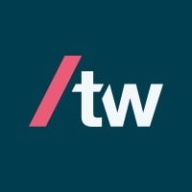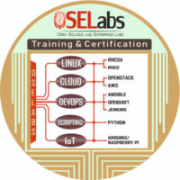

GoCD and Red Hat Ansible Automation Platform are both competitors in the continuous delivery and automation solutions market. Red Hat Ansible Automation Platform tends to have the upper hand due to its comprehensive automation capabilities and integration support, providing a superior ROI despite higher upfront costs.
Features: GoCD offers granular control with intuitive pipeline management, visualization capabilities, and a user-friendly interface. Red Hat Ansible Automation Platform stands out with agentless architecture, role-based access control, and extensive multi-platform support, highlighting its flexibility and robust automation features.
Room for Improvement: GoCD could enhance its plugin architecture and increase the number of available plugins, along with improving integration capabilities. Red Hat Ansible Automation Platform can improve by simplifying YAML syntax and advancing its network modules while expanding its agent management features.
Ease of Deployment and Customer Service: GoCD is praised for its straightforward setup and uncomplicated deployment process. Red Hat Ansible Automation Platform offers a smoother path for complex installations with extensive documentation and strong community support, helping ensure reliable performance.
Pricing and ROI: GoCD is cost-effective with lower setup costs, appealing to budget-conscious organizations. In contrast, Red Hat Ansible Automation Platform, despite higher initial costs, is preferred for its long-term value, with better ROI from its expansive features and integration capabilities.


Red Hat Ansible Automation Platform is a powerful network automation solution that allows organizations to handle every aspect of their application launch process within a single product. It enables users to share their automations so that teams within an organization can collaborate on various projects with ease. Ansible Automation Platform is designed to be used by all employees involved in the network automation process.
Red Hat Ansible Automation Platform Benefits
Some of the ways that organizations can benefit by choosing to deploy Red Hat Ansible Automation Platform include:
Red Hat Ansible Automation Platform Features
Reviews from Real Users
Red Hat Ansible Automation Platform is a highly effective solution that stands out when compared to many of its competitors. Two major advantages it offers are its automation manager and its comprehensive centralized GUI-based management interface.
MD J., a solution architect at STBL, says, “The automation manager is very good and makes things easier for customers with multi-cloud platforms.”
Aankit G., a Consultant at Pi DATACENTERS, writes, “We like the GUI-based interface for the tower. Before, we only had a command-line interface to run all the Ansible tasks. Now, the Ansible tower provides the complete GUI functionality to run, manage, and create the templates and the Ansible jobs. This includes the code and YAML file we can create. The GUI interface is the added advantage of this solution, including some integration with the different plugins.”
We monitor all Release Automation reviews to prevent fraudulent reviews and keep review quality high. We do not post reviews by company employees or direct competitors. We validate each review for authenticity via cross-reference with LinkedIn, and personal follow-up with the reviewer when necessary.